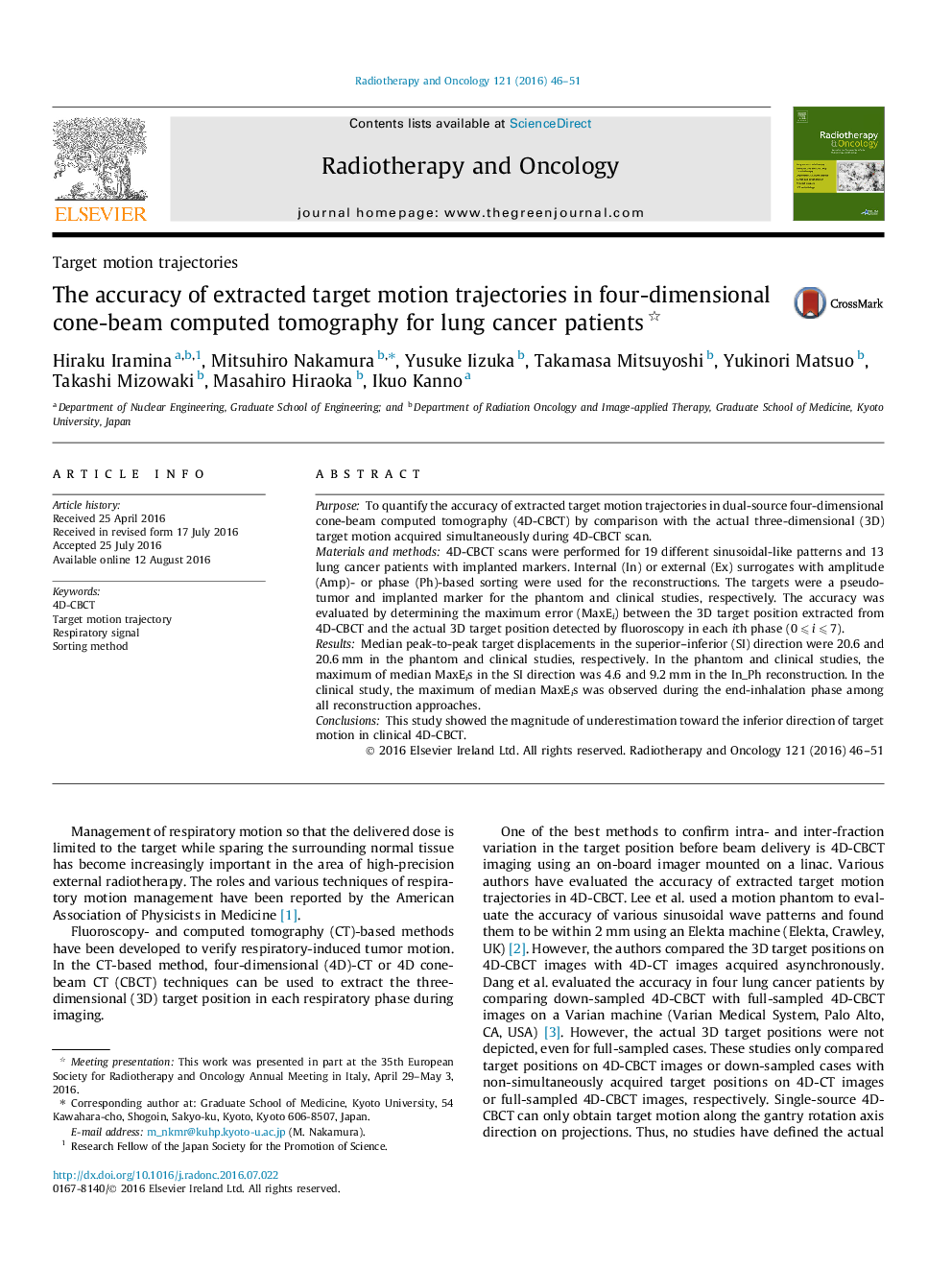| Article ID | Journal | Published Year | Pages | File Type |
|---|---|---|---|---|
| 5529792 | Radiotherapy and Oncology | 2016 | 6 Pages |
PurposeTo quantify the accuracy of extracted target motion trajectories in dual-source four-dimensional cone-beam computed tomography (4D-CBCT) by comparison with the actual three-dimensional (3D) target motion acquired simultaneously during 4D-CBCT scan.Materials and methods4D-CBCT scans were performed for 19 different sinusoidal-like patterns and 13 lung cancer patients with implanted markers. Internal (In) or external (Ex) surrogates with amplitude (Amp)- or phase (Ph)-based sorting were used for the reconstructions. The targets were a pseudo-tumor and implanted marker for the phantom and clinical studies, respectively. The accuracy was evaluated by determining the maximum error (MaxEi) between the 3D target position extracted from 4D-CBCT and the actual 3D target position detected by fluoroscopy in each ith phase (0 ⩽ i ⩽ 7).ResultsMedian peak-to-peak target displacements in the superior-inferior (SI) direction were 20.6 and 20.6 mm in the phantom and clinical studies, respectively. In the phantom and clinical studies, the maximum of median MaxEis in the SI direction was 4.6 and 9.2 mm in the In_Ph reconstruction. In the clinical study, the maximum of median MaxEis was observed during the end-inhalation phase among all reconstruction approaches.ConclusionsThis study showed the magnitude of underestimation toward the inferior direction of target motion in clinical 4D-CBCT.
